 |
|
 |
 |
 |
Inquérito de início do projeto
|
 |
 |
 |

Este inuquérito pretende aferir os conhecimentos acerca dos conteúdos que serão tratados ao longo do projeto:
Para responderes clica aqui
|
 |
 |
|
 |
 |
|
 |
 |
 |
Janeiro 2023
|
 |
 |
 |
A crescente demanda por recursos levou a uma perda gradual de recursos e a uma diminuição da biodiversidade. A redução/poluição dos recursos hídricos pode causar sérios problemas, sendo que a escassez de água pode afetar até um terço da população mundial em 2025 (de acordo com o relatório ambiental e climático da UE).
A nossa escola decidiu construir, em parceria com outras 6 instituições, um projeto Erasmus+ com o objetivo de sensibilizar a comunidade para a poluição ambiental e para as mudanças climáticas.
Entre muitas das atividades planificadas vamos proceder à medição da poluição do solo, da água e do ar com recurso a aplicações STEAM e a kits experimentais dando uso a métodos e técnicas baseados em STEAM, observando, analisando e interpretando diferentes exemplos de poluição.
Nesta tarefa, o Centro Siciliano di Fisica Nucleare e di Struttura della Materia, através da Prof. Alessia Tricomi (Professora Titular de Física Experimental na Universidade de Catania) desempenhará um papel fundamental na planificação e estruturação dos kits ambientais.
Com isto pretendemos fomentar o aumento da consciência acerca da reciclagem e da gestão de resíduos, utilizando formas e métodos científicos na resolução de problemas.
Este projeto está a ser desenvolvido, em parceria, com a Alemanha, Malta, Estonia, Itália e Turquia e na nossa escola é coordenado pela docente Vanda Franco.
Nos dias 16, 17 e 18 de janeiro a coordenadora e a docente Stephanie de Melo deslocaram-se a Malta, para participarem na primeira reunião transnacional.
Nessa reunião foram abordados aspetos técnicos e práticos a ter em consideração no planeamento dos kits ambientais (ex. idade dos alunos a que se destinam) bem como procederam à seleção do logo representativo do projeto, cujo vencedor foi o da Alemanha.
A saber que Malta é um país insular localizado no Sul da Europa, cujo território ocupa as Ilhas Maltesas, um arquipélago situado no Mar Mediterrâneo. Malta abrange uma área terrestre de 316 km², com a população estimada de 452 542 habitantes (2020), sendo um dos menores países da Europa. A capital é Valeta e a maior cidade é Birkirkara. O Maltês é a língua nacional e o inglês é a língua co-oficial.
A titulo comparativo, a ilha da Madeira tem 737 Km² (área total de 801,5 Km2 - ilha da Madeira, ilha do Porto Santo, 6 ilhéus e grupos de ilhas Desertas e Selvagens) e aproximadamente 250.744 habitantes (2021).
|
 |
 |
|
 |
 |
|
 |
 |
 |
Primeira reunião transnacional - Malta
|
 |
 |
 |
1ª Reunião Projeto
A crescente demanda por recursos levou a uma perda gradual de recursos e a uma diminuição da biodiversidade. A redução/poluição dos recursos hídricos pode causar sérios problemas, sendo que a escassez de água pode afetar até um terço da população mundial em 2025 (de acordo com o relatório ambiental e climático da UE).
A nossa escola decidiu construir, em parceria com outras 6 instituições, um projeto Erasmus+ com o objetivo de sensibilizar a comunidade para a poluição ambiental e para as mudanças climáticas.
Entre muitas das atividades planificadas vamos proceder à medição da poluição do solo, da água e do ar com recurso a aplicações STEAM e a kits experimentais dando uso a métodos e técnicas baseados em STEAM, observando, analisando e interpretando diferentes exemplos de poluição.
Nesta tarefa, o Centro Siciliano di Fisica Nucleare e di Struttura della Materia, através da Prof. Alessia Tricomi (Professora Titular de Física Experimental na Universidade de Catania) desempenhará um papel fundamental na planificação e estruturação dos kits ambientais.
Com isto pretendemos fomentar o aumento da consciência acerca da reciclagem e da gestão de resíduos, utilizando formas e métodos científicos na resolução de problemas.
Este projeto está a ser desenvolvido, em parceria, com a Alemanha, Malta, Estonia, Itália e Turquia e na nossa escola é coordenado pela docente Vanda Franco.
Nos dias 16, 17 e 18 de janeiro a coordenadora e a docente Stephanie de Melo deslocaram-se a Malta, para participarem na primeira reunião transnacional.
Nessa reunião foram abordados aspetos técnicos e práticos a ter em consideração no planeamento dos kits ambientais (ex. idade dos alunos a que se destinam) bem como procederam à seleção do logo representativo do projeto, cujo vencedor foi o da Alemanha.
A saber que Malta é um país insular localizado no Sul da Europa, cujo território ocupa as Ilhas Maltesas, um arquipélago situado no Mar Mediterrâneo. Malta abrange uma área terrestre de 316 km², com a população estimada de 452 542 habitantes (2020), sendo um dos menores países da Europa. A capital é Valeta e a maior cidade é Birkirkara. O Maltês é a língua nacional e o inglês é a língua co-oficial.
A titulo comparativo, a ilha da Madeira tem 737 Km² (área total de 801,5 Km2 - ilha da Madeira, ilha do Porto Santo, 6 ilhéus e grupos de ilhas Desertas e Selvagens) e aproximadamente 250.744 habitantes (2021).
Aproveitamos ainda para agradecer ao turismo da Madeira pela oferta de material informativo acerca do arquipélago, à Freguesia do Caniço pela oferta do logotipo da nossa freguesia, à Casa do Povo do Caniço que ofereceu a nossa tradicional boneca de massa, tudo entregue à escola de Malta, bem como outras brochuras acerca da nossa linda terra igualmente cedidas.
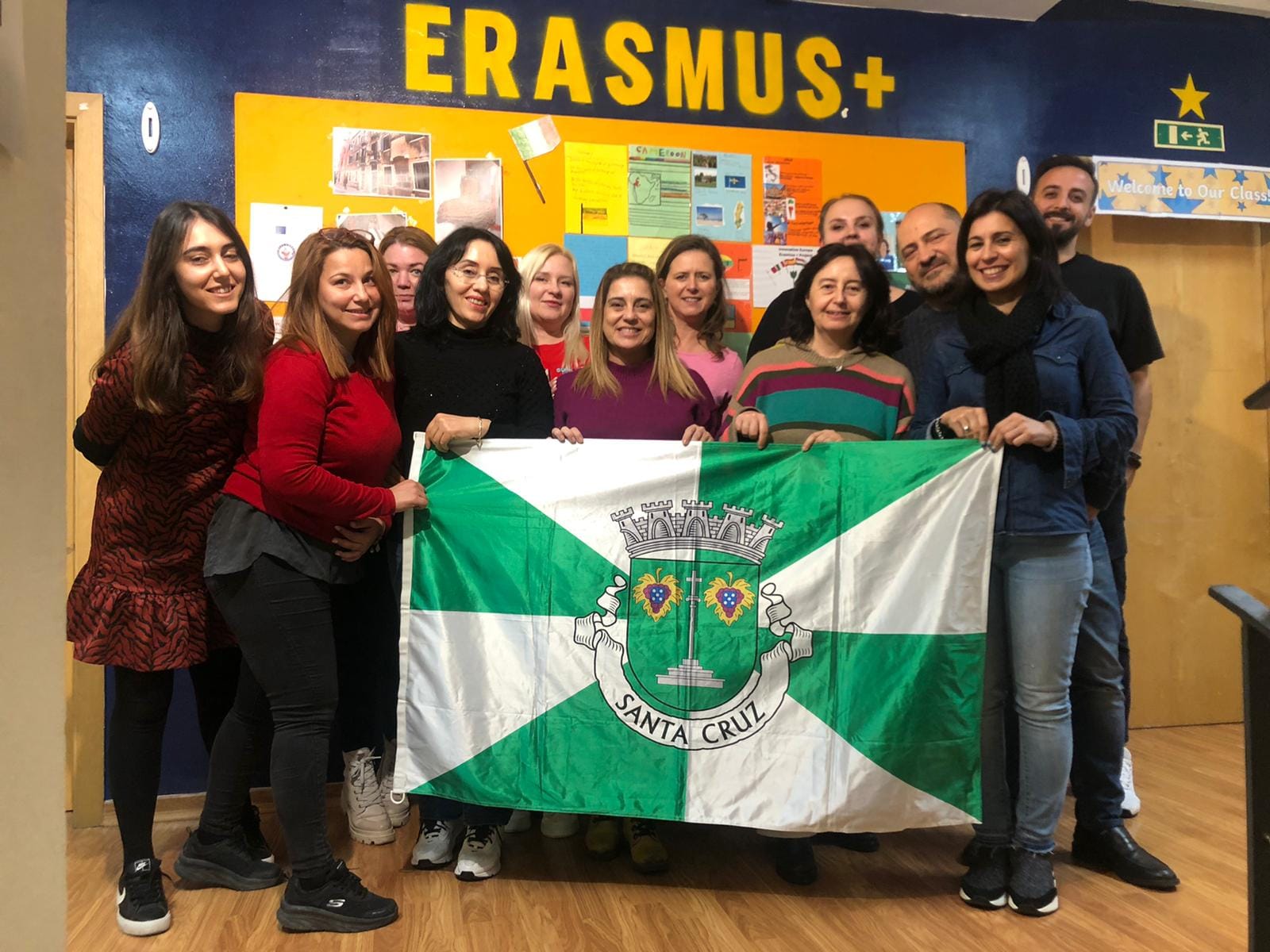 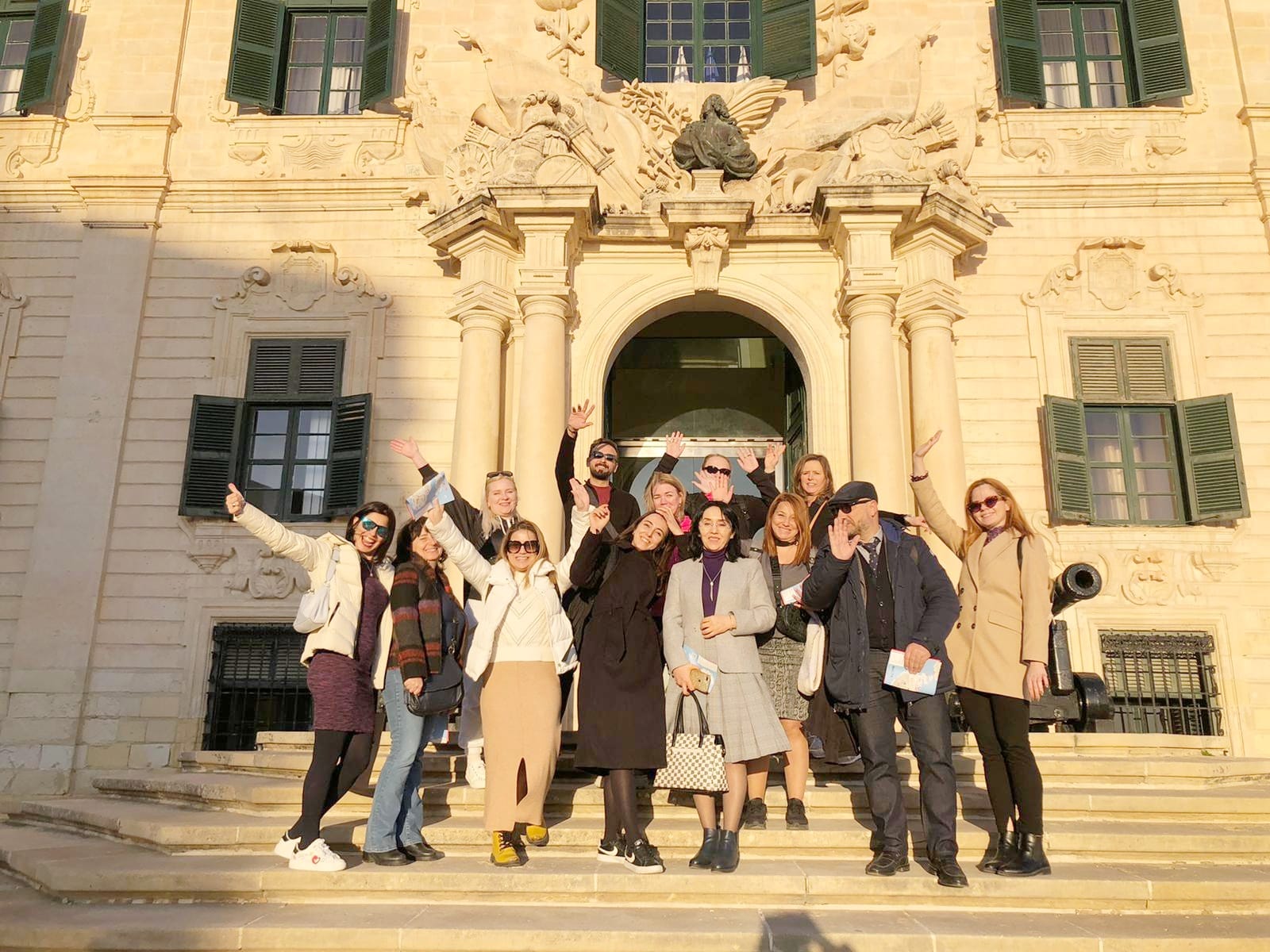 
 
 
 
 

|
 |
 |
|
 |
 |
|
 |
 |
 |
C1 - Sicily - Catania
|
 |
 |
 |
C1 - Italy - Catania

Na semana de 5 a 9 de junho, uma equipa de 4 alunas, Yara Jesus, Bianca Nóbrega, Margarida Freitas e Inês Nóbrega, acompanhadas pela Direção da Escola, Professora Maria da Luz Castro, pela coordenadora do Projeto, Vanda Franco e pela docente Lília Gouveia, da EB1/PE das Figueirinhas, deslocou-se a Catânia, na ilha de Sicília, em Itália, para estar presente na mobilidade de boas práticas C1 do projeto Erasmus+ "let's save our environment and our future".
Quarenta e um alunos e professores da Estônia, Alemanha, Malta, Portugal e Turquia participaram em cinco dias intensos de seminários, laboratórios de física ambiental e medições de campo organizados pelo Centro Siciliano di Física Nucleare e di Struttura della Materia.
Ao longo da semana a Città della Scienza transformou-se num grande laboratório onde se falou de ambiente, clima, poluição, sustentabilidade e onde os alunos aprenderam a medir alguns dos parâmetros fundamentais para caracterizar a qualidade da água, solo e ar.
O primeiro dia de trabalhos, coincidiu com a comemoração do Dia Mundial do Ambiente (5 de junho). Nesta data foram abordadas várias temáticas ligadas à água, nomeadamente a pegada hídrica e como medir a quantidade de precipitação. Para tal foram realizadas várias experiências tais como a replicação do ciclo da água e as diferenças de densidade da mesma.
O segundo dia foi dedicado à exploração do solo. Neste âmbito abordaram o conceito de geopolimerização, um termo criado por David Davidovitch, em 1978, para classificar a descoberta da geosíntese para a produção de materiais poliméricos inorgânicos que são usados atualmente em dezenas de aplicações industriais. Na prática, os Sicilianos aproveitam as cinzas do vulcão Etna para, depois de misturar com substâncias químicas, transformá-las em materiais de construção, como por exemplo em tijolos. As alunas presentes na mobilidade realizaram uma experiência replicadora deste fenômeno com recurso a materiais utilizados no dia-a-dia. Ainda puderam explorar os vários tipos de rocha e a sua formação.
Durante esta semana a equipa também visitou a reserva "Villasmundo - S. Alfio" com o objetivo de efetuar a recolha de amostras de água e solo para posteriormente proceder à sua análise na "città della Scienza" (ex: PH, transparência e temperatura da água). Foi ainda explorado o micro: bit recorrendo à programação para medir a temperatura e a humidade do ambiente.
Esta mobilidade também contou com uma visita ao Mosteiro Beneditino de San Nicolò l'Arena – Catania e com uma visita de barco à Área Marinha Protegida das Ilhas Ciclopes, onde, guiados pelo Diretor da mesma, realizaram uma "viagem" desde a lenda de Ulisses até às atividades atuais de salvaguarda e monitorização dos mares.
Esta mobilidade esteve a cargo do Centro Siciliano di Física Nucleare e di Struttura della Materia onde, a Professora Alessia Tricomi, Professora de Física Experimental da Universidade, juntamente com a sua equipa de docentes/colaboradores proporcionaram uma semana rica em experiências a todos os participantes.
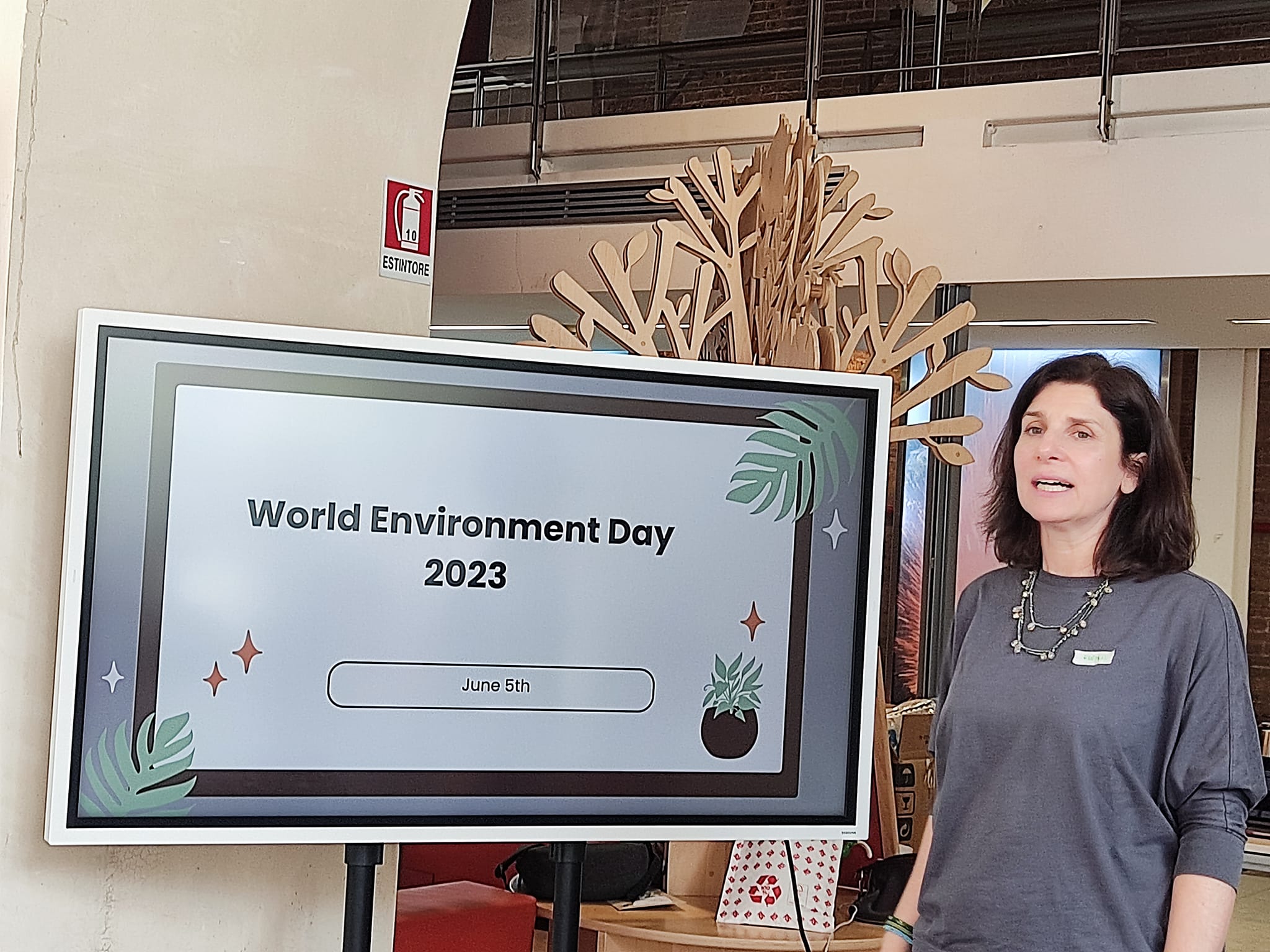 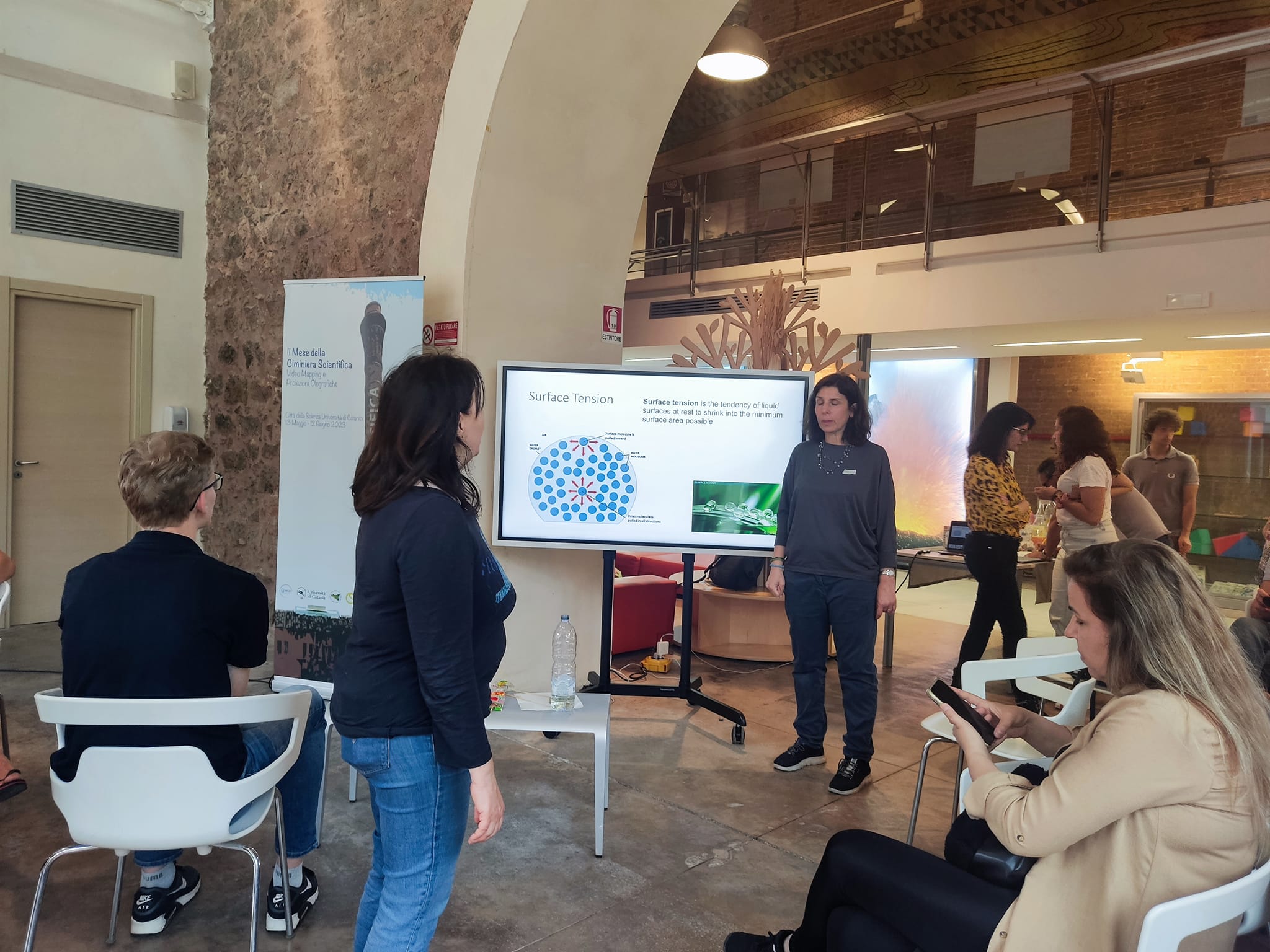
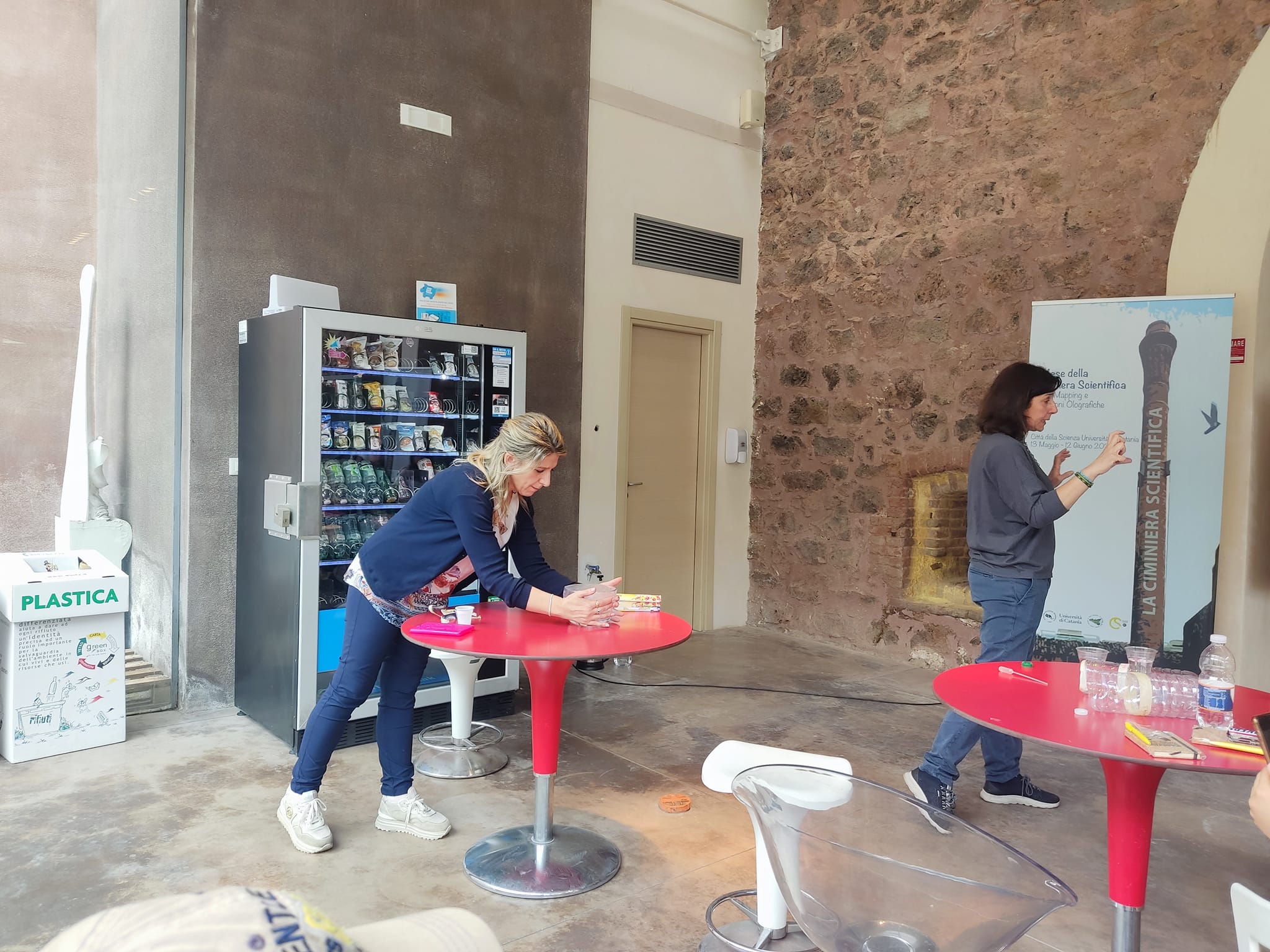 
 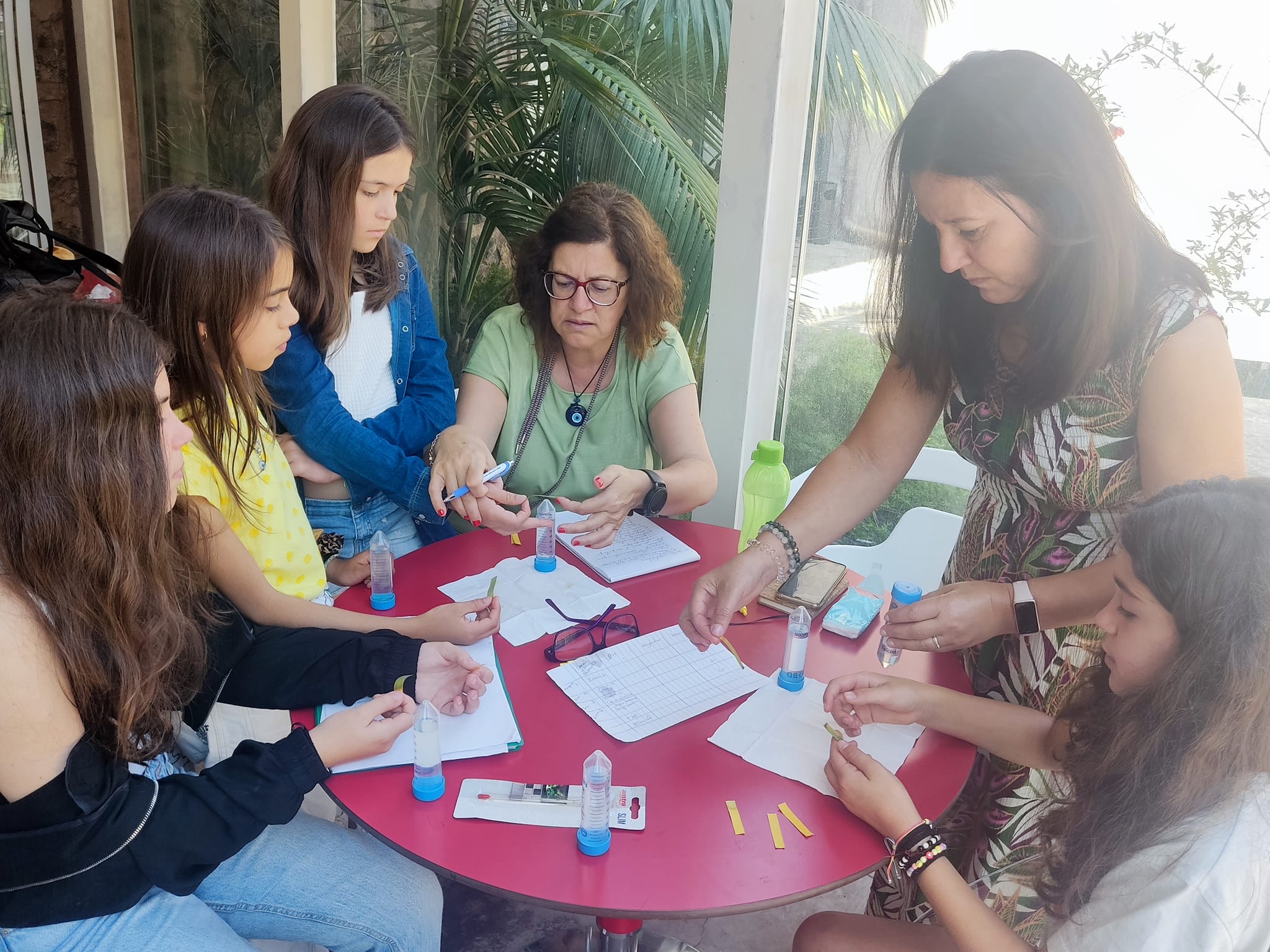 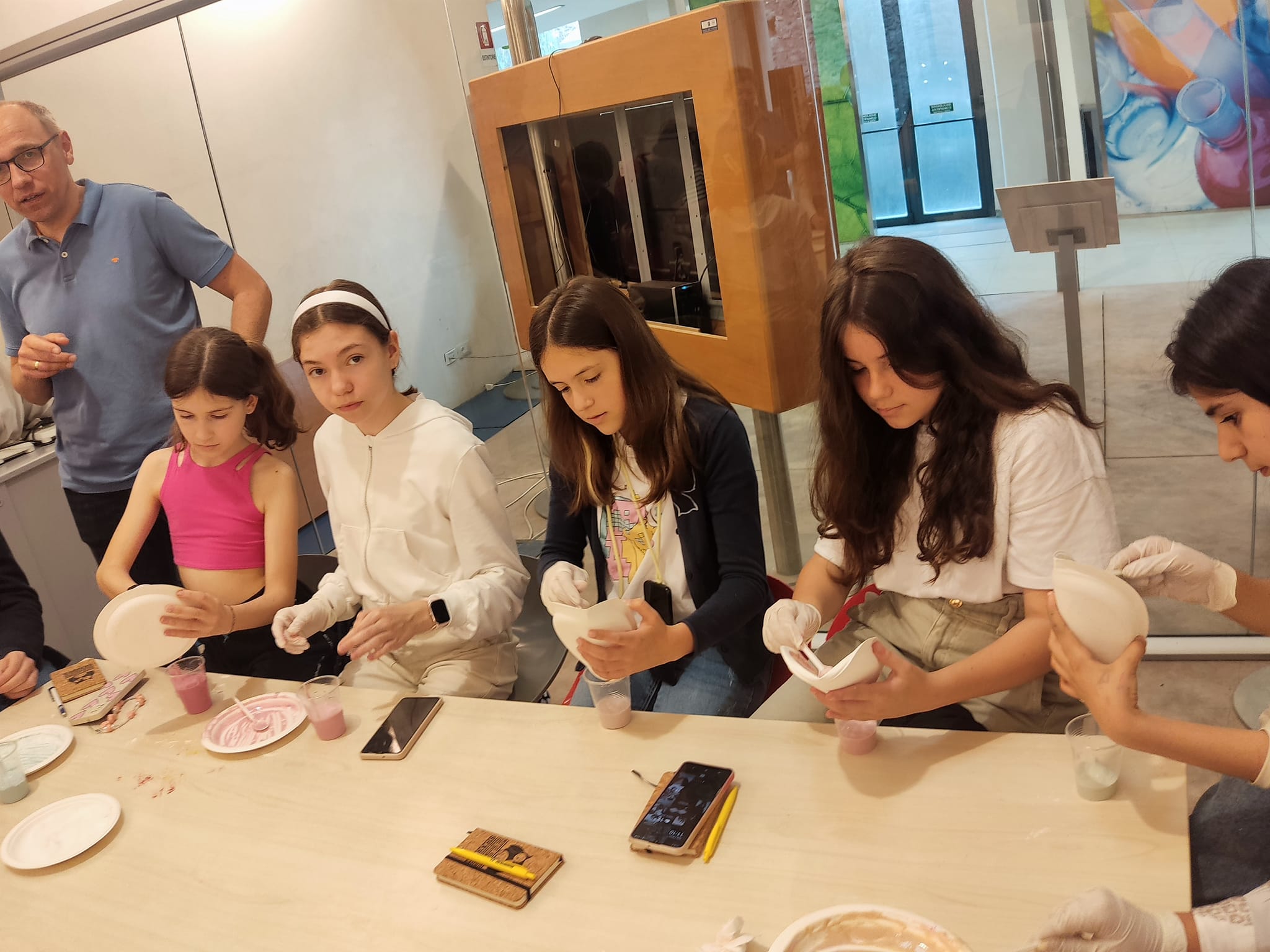 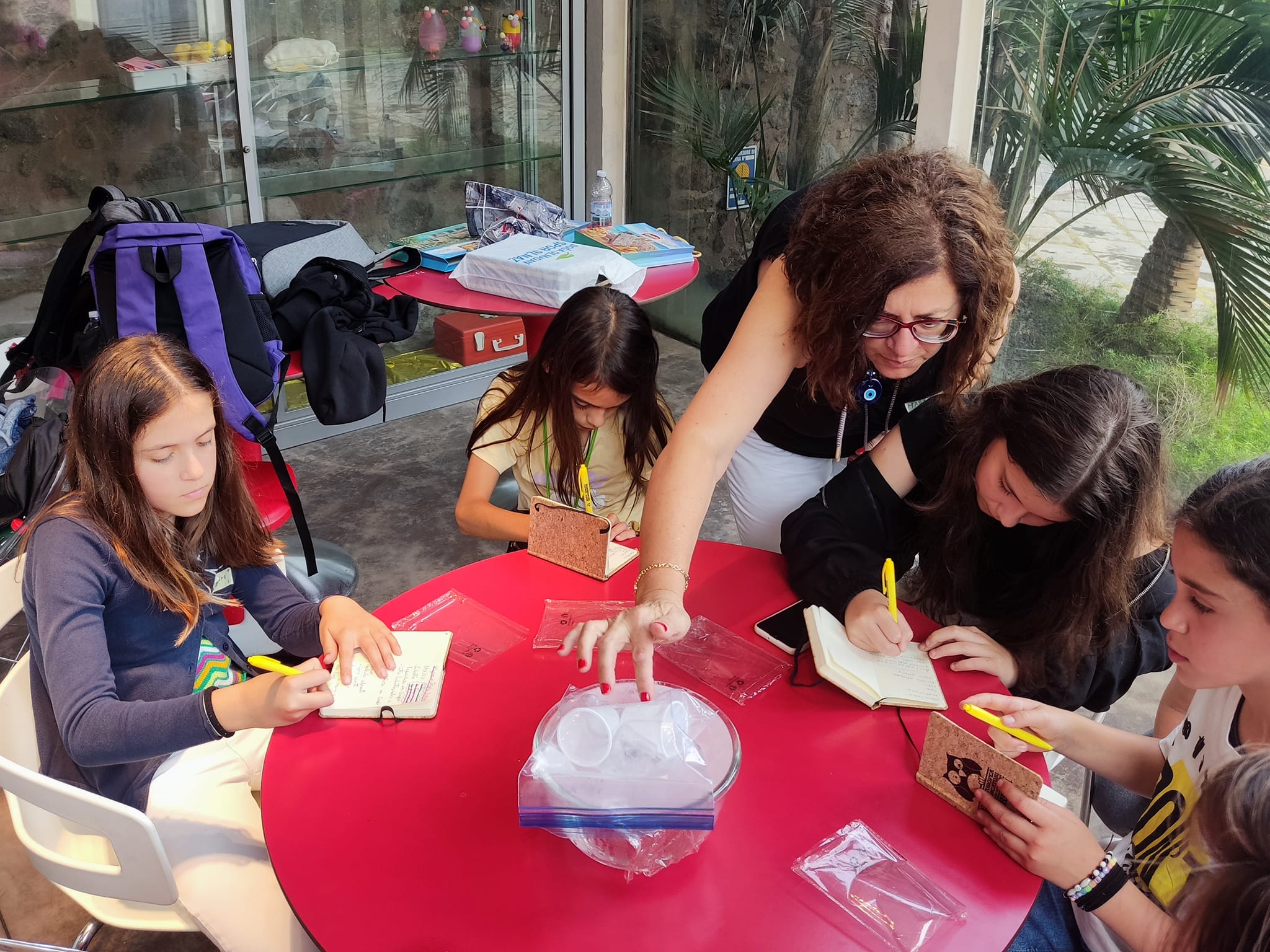 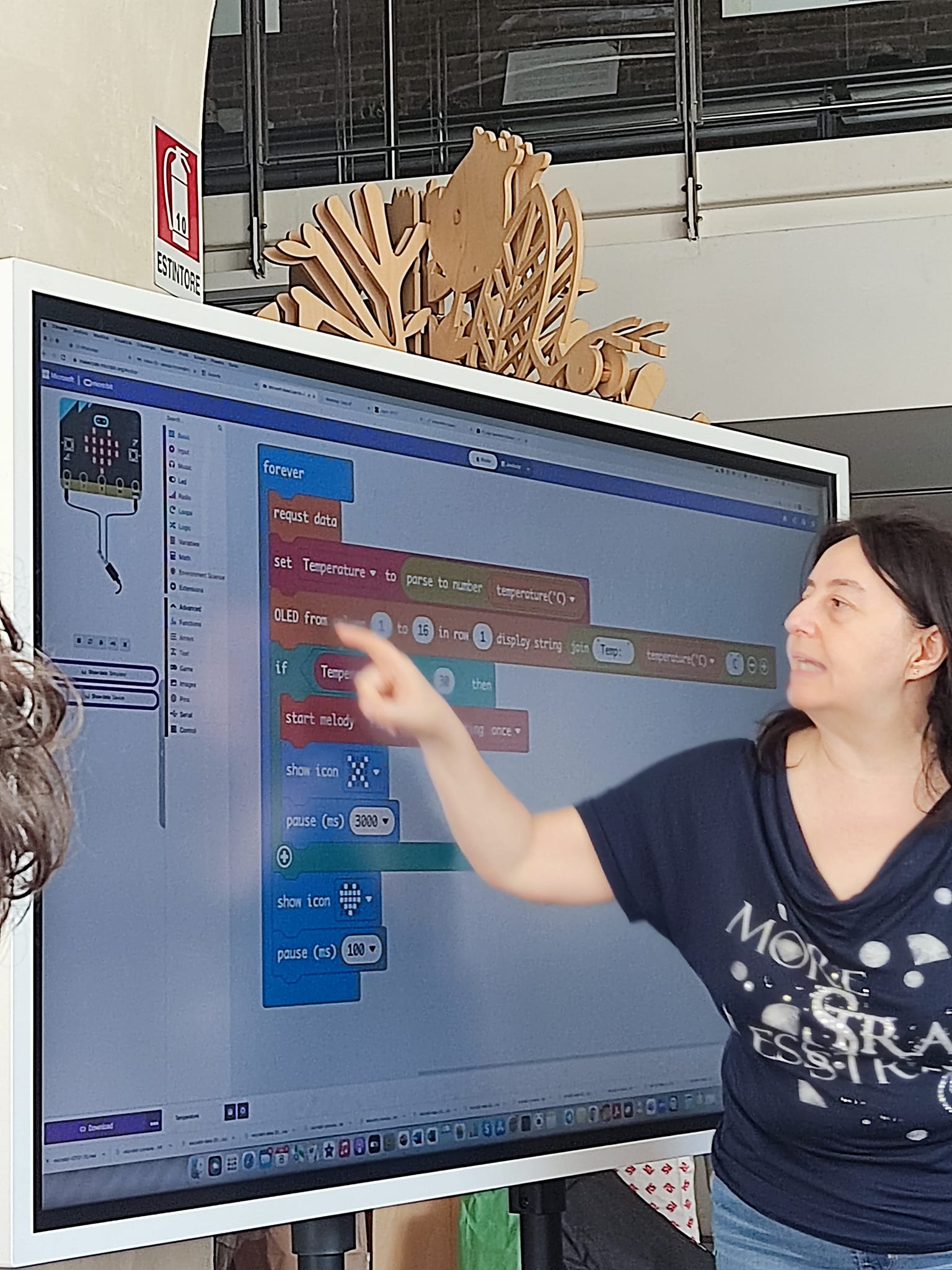
|
 |
 |
|
 |
 |
|
 |
 |
 |
C2 - Estonia
|
 |
 |
 |
Mobilidade C2, (Estónia)

A EB1/PE das Figueirinhas iniciou este ano letivo com a mobilidade C2, à Estónia, no âmbito do Projeto Erasmus+ “Let´s save our environment and our future”.
Esta mobilidade contou com a participação dos alunos Jorge Aguiar, Gabriela Silva, Maria Inês Azevedo e Marcos Ramirez, acompanhados pelas docentes Vanda Franco, Marília Trigo e Fernanda Gouveia.
Todos os parceiros deste projeto, Estónia, Alemanha, Portugal, Turquia, Malta e Itália realizaram várias atividades, nomeadamente a discussão de questões ambientais, a visita aos pontos de interesse na cidade de Narva, um piquenique junto à praia e a construção de uma “boneca amuleto”, a Travnitsa, que é a tradicional boneca russa, cuja função seria espantar as doenças e o mal.
Narva fica situada a 200 quilômetros da capital estoniana, Tallin e faz fronteira com Ivangorod, Russia.
Localizada no extremo oriente da Estônia, Narva é a terceira maior cidade do país com quase 70 mil habitantes. A população de Narva é constituída sensivelmente 90% de russos e seus descendentes, vindos durante o período da União Soviética.
A equipa de alunos e professores realizaram a testagem de amostras de água dos 6 países com a ajuda de especialistas e de um dispositivo de medição. A saber que a água levada pelos docentes desta escola foi registada na medição como água potável para consumo humano…contrariamente a amostra de água da torneira levada pelos colegas malteses obteve o resultado de água de esgotos.
A equipa recomenda que, se visitar Malta, consuma sempre água engarrafada.
Os alunos e docentes ainda fizeram a recolha de lixo na praia em Narva, aprenderam aspetos acerca do Mar Báltico e participaram nas experiências de limpeza/filtração da água poluída com petróleo e a triagem de resíduos sólidos.
Outra atividade concluída e apresentada em Narva foi a revisão do ciclo dos produtos em termos de impacto ambiental (a Análise de Ciclo de Vida é a compilação e avaliação das entradas, saídas e dos potenciais impactes ambientais de um sistema de produto ao longo do seu ciclo de vida. O termo “ciclo de vida” refere-se à maioria das atividades no decurso da vida do produto desde a sua fabricação, utilização, manutenção, e deposição final; incluindo aquisição de matéria-prima necessária para a fabricação do produto).
Finalmente, no culminar desta experiência, a equipa participou na discussão de problemas globais no centro 'Mondo' em Tallinn (https://mondo.org.ee/en/). Esta organização, Mondo desenvolve e vende artesanato de comunidades parceiras (Uganda, Quénia, Gana, Ucrânia, Geórgia, Turquia, Líbano, Jordânia, Síria, Iémen, Afeganistão e Birmânia) para melhorar o bem-estar das mulheres e das pessoas com deficiência. Esta organização incide a sua atenção nas mulheres destes países porque é estimado que as mulheres destas regiões invistam 99% do seu rendimento na família, comparativamente ao homem cuja estimativa desce para 30-40%.
 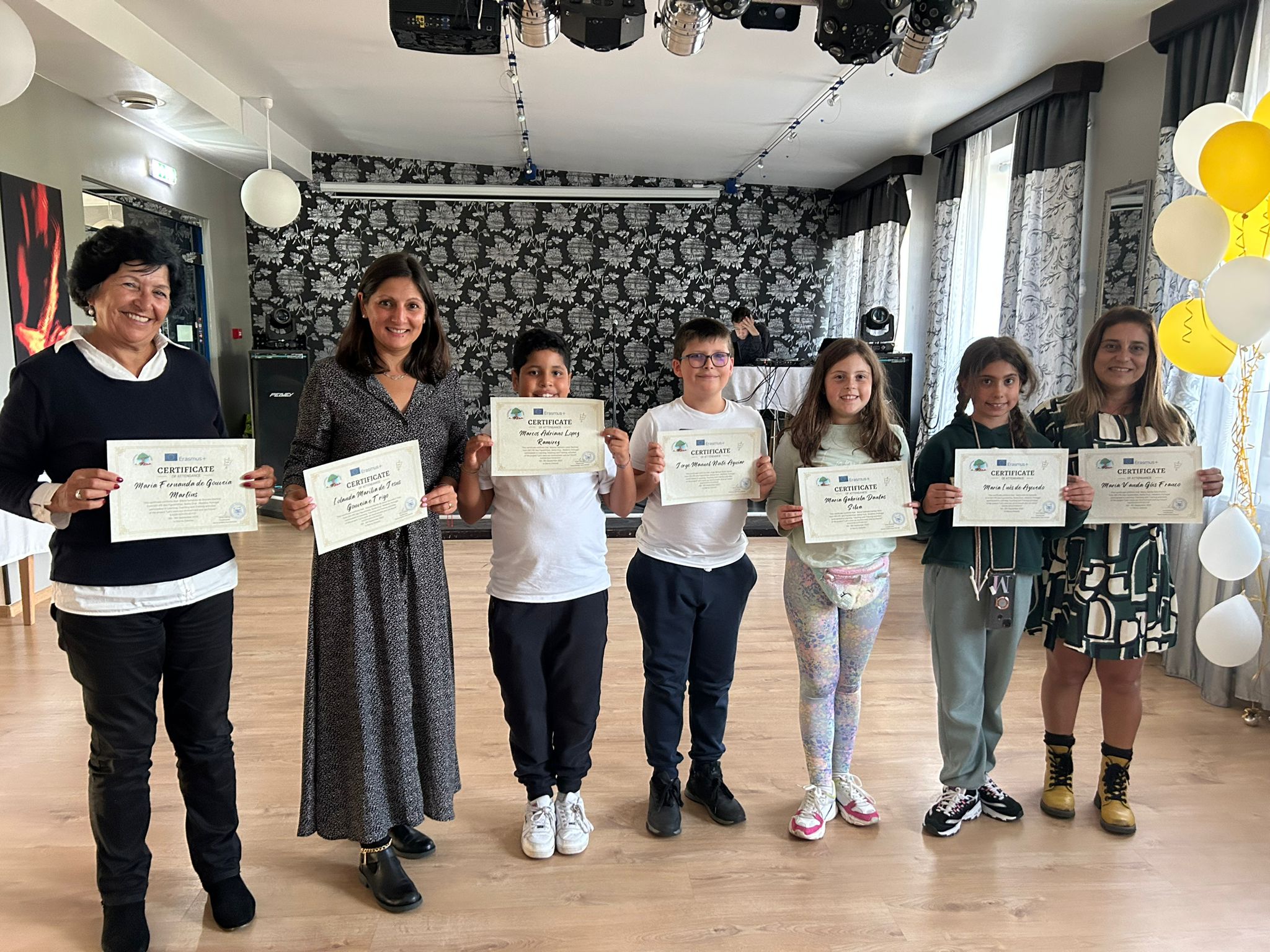
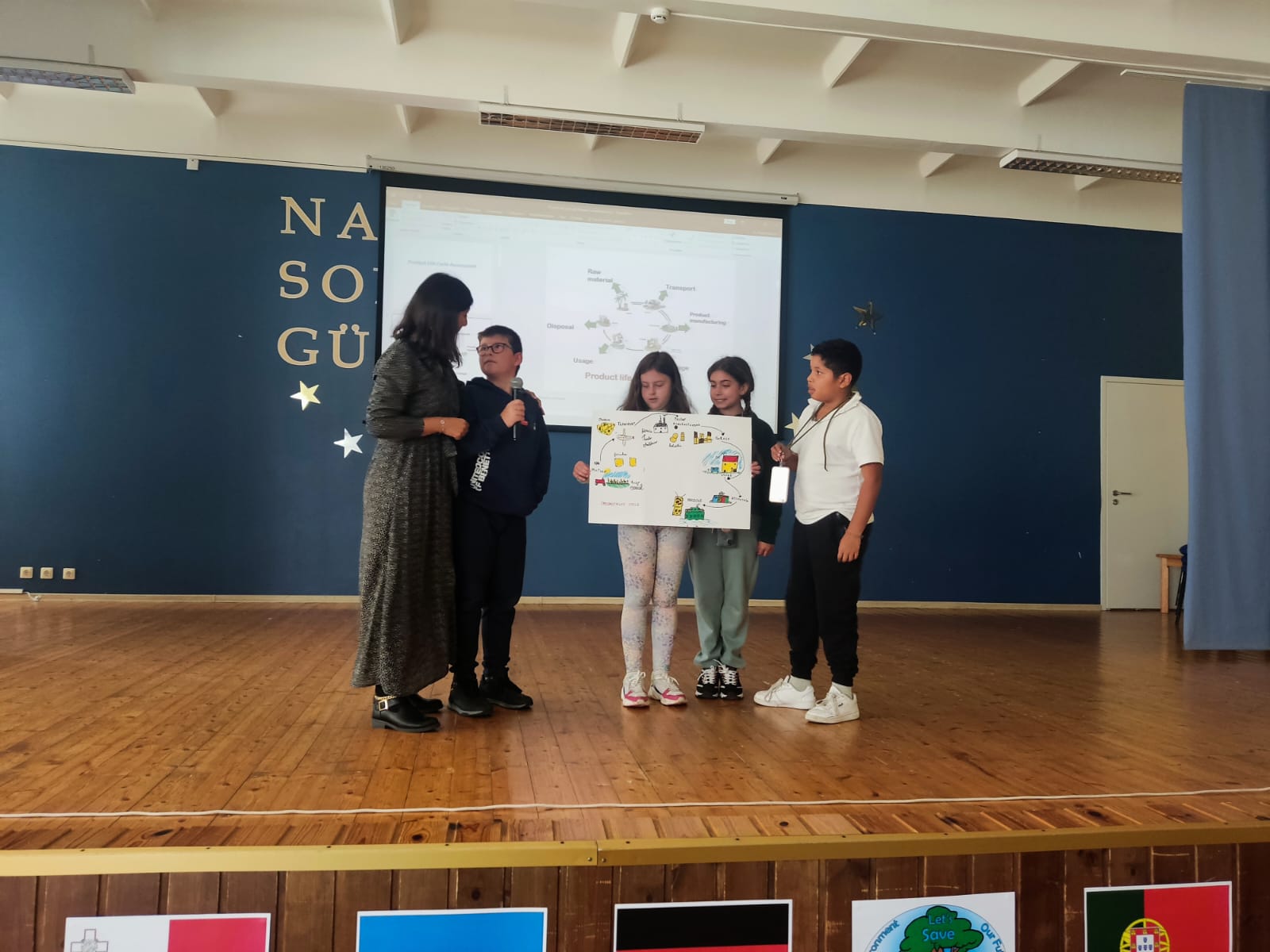 
 
 
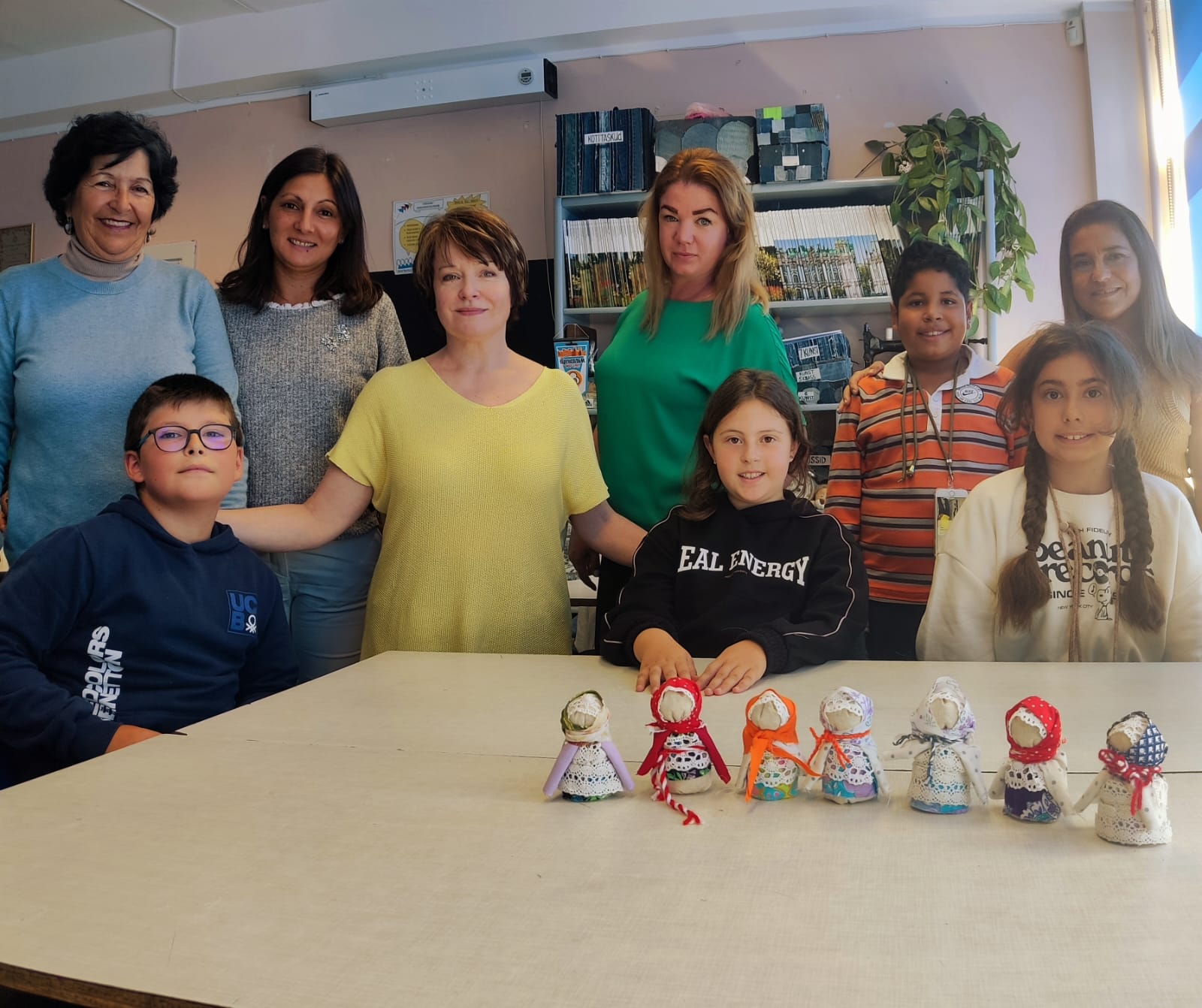 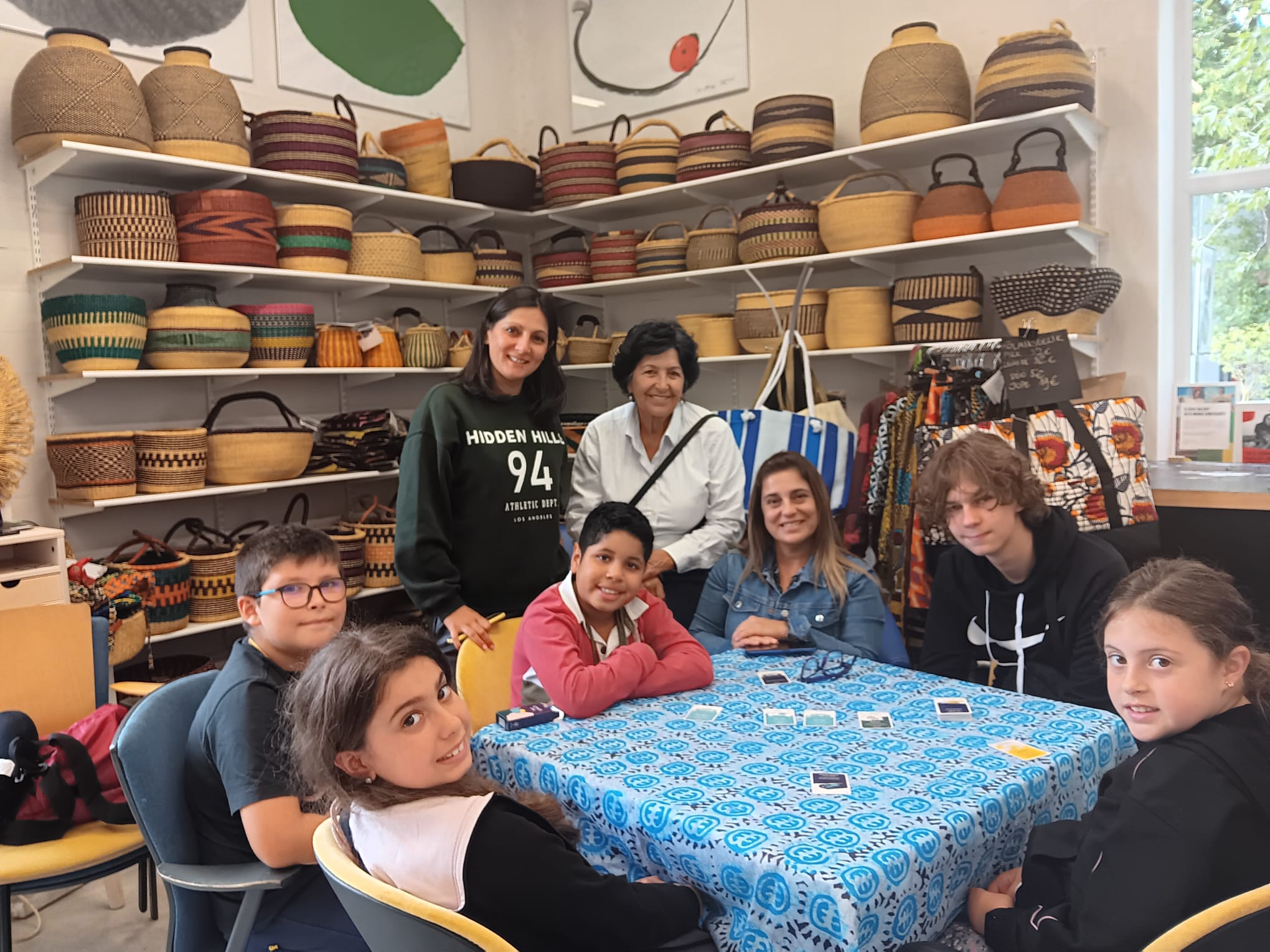
|
 |
 |
|
 |
 |
|
 |
 |
 |
C3 Madeira
|
 |
 |
 |
C3 - Learning, Teaching, Training Activities
To Measure the Soil Pollution with STEAM Applications and Experimental Kits”
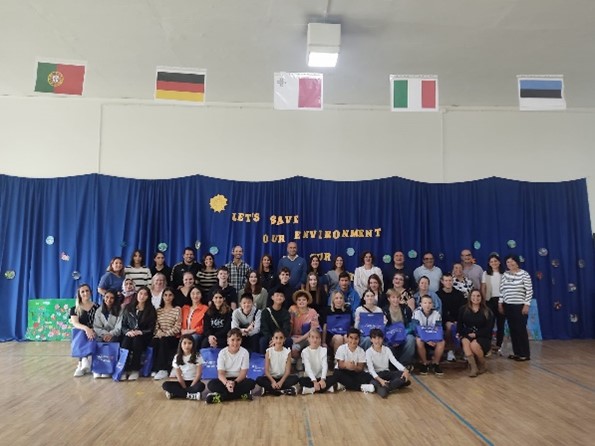
At the opening ceremony we were attended by the Director of our school, Maria da Luz Castro, the President of the Parish Council of Caniço, Milton Teixeira, the person responsible for the educational services of the Zootechnical Station of Madeira, Dr. Cláudia Barreto, as well as several teachers from our school, who throughout the year work this environmental theme of high importance.
Professor Sérgio Ribeiro presented a song of his own, made within the scope of the project to represent the work developed by all partners. This was performed by the 4th grade students who sang and enchanted!
The 3rd graders also sang a beautiful song in English.
All participants received a flyer about environmental practical ideas to do at home to save our environment.Subsequently, and after a snack, two workshops were developed.
The first was facilitated by Dr. Cláudia Barreto, who focused on soil production and animal welfare and who, throughout the week, will accompany us in the activities that we will develop.The second workshop was facilitated by Dr. Livio Caruso, but conceived by the Director of the Sicilian Center for Nuclear Physics and Structure of Matter (CSFNSM), Dr. Alessia Tricomi, which focused on the measurement of soil parameters/characteristics through STEAM applications.
During the mobility, teacher Vanda Franco also showed the Soil Moisture experiment to track the soil moisture of plants!

To do that she used these materials:
- 1 micro:bit with battery pack and batteries
- 2 long nails or silver
- 2 crocodile clips
Here’s what you connect your soil moisture sensor:
- Connect a nail to the 3V pin with a croc clip and insert it into the soil.
Connect the other nail to the P0 pin with a croc clip and insert it into the soil.
The soil itself has some electrical resistance which depends on the amount of water and nutrients in it. It acts like a variable resistor in an electronic circuit. The water is not conductive but the nutrient content is. The combination of water and soil nutrients makes the soil have some conductivity. So, the more water there is, combined with the nutrients, the less the soil will have electrical resistance.
To make this experiment go to Código (microbit.org) and follow instructions.
The working group was also at the University of Madeira, at ISOPlexis - Centre for Sustainable Agriculture and Food Technology.
This service is a research unit, which develops activity in the fields of Agriculture, Sustainability, Agri-food and Food Technology, with a focus on agrodiversity in the broad sense, genetic resources, local varieties, food technology and food products.
We had the opportunity to learn about the Vercochar project, co-financed by the Interreg-MAC 2014-2020 program, which aims to implement mitigation actions to improve the response of populations and ecosystems to the effects of climate change, facilitating the regeneration of degraded soils, affected by erosion, drought, surface runoff or desertification.
During the visit, a group of researchers, Cristina Oliveira, Sofia Valente and Gregório Freitas, in a very friendly and enthusiastic way, made known the experimental field and the laboratory where, among other contents, we learned about three techniques for monetizing the soil: Mulching or stuffing, application of Biochar in the Soil and Green Manure.
We also had the opportunity to carry out some experiments in the ISOPlexis laboratory.
To know more about visit ISOPlexis (uma.pt)
We also visited the Land and Plant Analysis Centre, belonging to the Regional Directorate of Agriculture and Fisheries, which is located in the Agricultural Quality Laboratory, in Camacha.
The visit was directed by Dr. José Brito, who, in a very enthusiastic and friendly way, explained and exemplified all the procedures that are carried out, from the reception of the soil sample, to the procedures carried out for its testing.
In this laboratory they analyze soil samples to perform analytical determinations of total nitrogen, phosphorus, potassium, sodium, calcium, magnesium, iron, copper, zinc, manganese and boron.
Soil and substrate analyses consist of chemically analysing soils and substrates and also analysing soils in their physical properties.
We were also able to observe, granulometrically, the clay, silt and sand contents (essential parameters for the classification of soil texture).
To know more about visit As análises de solos e de plantas (madeira.gov.pt)
In this Erasmus+ exchange we made known the orography of the island of Madeira.
Madeira Island is one of Europe's most beautiful travel locations with many thousands of tourists returning year after year because it offers not only an all year round summer climate, as well as wonderful fauna and flora, but it is also virtually crime-free and one of the safest holiday destinations in the world.
Our guests learned that on the island of Madeira the relief is quite irregular, with a predominance of rocky mountains intersected by deep valleys with steep slopes.
With an area of 741 km², the island of Madeira is an oasis in the Atlantic where, among forests, cities, beaches and mountains, a great natural and cultural wealth is preserved.
Madeira Islands, archipelago of volcanic origin in the North Atlantic Ocean, belonging to Portugal. It comprises two inhabited islands, Madeira and Porto Santo, and two uninhabited groups, the Desertas and the Selvagens. The regional capital, Funchal, is on Madeira Island.
The islands are the summits of mountains that have their bases on an abyssal ocean floor. Administratively, they form the autonomous region of Madeira. The regional capital, Funchal, is located on Madeira Island.
Madeira Island, the largest of the group, is 34 miles (55 km) long, has a maximum width of 14 miles (22 km) and a coastline of about 90 miles (144 km), and rises in the centre to Ruivo Peak (6,106 feet [1,861 metres] above sea level). The greater part of the interior above 3,000 feet (900 metres) is uninhabited and uncultivated.
Communities of scattered huts are usually built either at the mouths of ravines or upon slopes that descend from the mountains to the coast.
Agriculture has long been the dominant activity of Madeira and Porto Santo islands. Crops historically grown on the islands include sweet potatoes; gourds of various kinds; kalo, or taro, introduced from the Pacific islands; most of the culinary vegetables of Europe; cereals; sugarcane; and various fruits, such as oranges, lemons, guavas, mangoes, loquats, custard apples, figs, pineapples, and bananas. Banana plantations and vineyards now predominate, and bananas and the eponymous Madeira wine are among the most important exports. Other economic activities include sugar processing, fishing, and handicrafts such as woodworking, wickerwork, and embroidery—the last of which was introduced to Madeira in the 1850s by Elizabeth Phelps, the daughter of an English wine shipper.
The last day began in the morning at Francisco Franco Secondary School with a work meeting, whose objective was to work on the final products of the project.
 
 
|
 |
 |
|
 |
 |
|
 |
 |
 |
C4 Plastic recovery and recycling targets and annual action plan waste management
|
 |
 |
 |
C4 - "Plastic Recovery and recycling targets and annual action plan waste management"
Throughout the week of March 11th to 15th, the Erasmus group travelled to Vechta, Germany, to participate in the C4 mobility entitled "Plastic Recovery and recycling targets and annual action plan waste management" under the Erasmus+ project kA220 "Let's save our environment and our future".
On the 11th, teacher Susanne Wissing, from Kolleg St. Thomas, welcomed us with open arms with a small presentation game and introduced the school. Afterwards, there was the official reception of this week of activities, with the presence of the principal, Father Christian and the entire school community. This was followed by a joint tour of Haus im Moor in Goldenstedt. During the tour, initially on a small train, and later on foot (due to a train breakdown), the group was able to observe beautiful landscapes.
On the morning of the 12th, the group carried out some scientific experiments on the theme of waste separation, photovoltaic energy, air quality and magnetism. For a more detailed investigation of the air quality, our measuring devices, the experimental plates, were also used. Afterwards the group made a visit to the Tonnenmoor landfill in Vechta and learned interesting information about waste separation, recycling and composting of waste.
On the 3rd day a digital scavenger hunt was programmed – Actionbound, where the group solved puzzles about the environmental theme. Then the sereval groups built musical instruments from "garbage" and made music together. This day ended with a meeting with the project coordinators, where the final products of the project were discussed.
On Thursday the group headed to Bremen where a guide showed the beautiful city and told the story of the famous "Musicians of Bremen". This fable, collected from popular tradition, edited and published by the Brothers Grimm in the famous collection of short stories that would become known as Grimms Märchen (in Portuguese, Grimm's Tales) tells the story of four domestic animals who, after a lifetime of work, are mistreated by their owners. In the end, they decide to flee to the city of Bremen to become musicians there. Contrary to what the title of the tale suggests, the characters never arrive in Bremen because, along the way, they manage to scare and scare away a gang of thieves, taking possession of the proceeds of their thefts and settling permanently in the hut previously occupied by the criminals.
At the end of this day the group also visited the Klimahaus Bremerhaven – where a journey through the Earth's climatic zones was experienced. The Kliimahaus is a mix between a science center and a theme park. Teachers and students crossed 5 continents and 9 locations, meeting people from all over the world who "talked" about their daily lives and described how the climate affected them. It shows a unique world of weather and climate.
In the spirit of this project "Let's save our environment and our future", the group was able to learn many interesting facts and gain insights into different types of climate protection.
On the last day of this work week, waste prevention was discussed. We worked together to gather ideas and develop strategies to avoid waste, both at school and at home. These results were recorded and presented through posters.
Finally, all teachers and students received the certificates that attest the participation in this mobility of the "Let's save our environment and our future" project.
|
 |
 |
|
 |
|